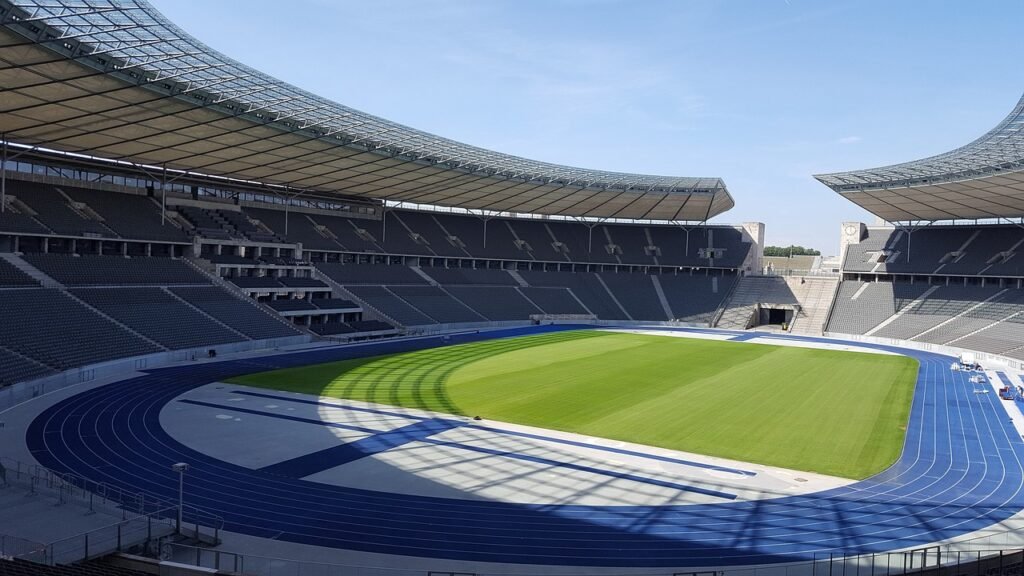Everton Football Club is on the verge of a historic transformation as it prepares to leave Goodison Park for a new home at Bramley-Moore Dock. This move marks not just a change of address, but a bold step into the future for the club, its supporters, and the city of Liverpool. With the stadium set to open for the 2025/26 season, excitement and anticipation are building across the blue half of Merseyside.
The End of an Era at Goodison Park
Goodison Park has been Everton’s home since 1892, hosting countless memorable matches and generations of loyal fans. The club confirmed that the 2024/25 season will be its last at the famous ground, ensuring that the final year will be a celebration of the stadium’s rich history. Everton’s interim CEO, Colin Chong, emphasised that this decision was not due to construction delays, but rather a desire to give Goodison Park a fitting send-off, shaped by feedback from nearly 10,000 supporters who took part in a stadium migration survey. The club is planning a series of events and tributes to honour what many consider one of football’s most iconic venues.
Why Bramley-Moore Dock?
The journey to a new stadium has been long and complex. Talks of moving began as early as 1996, with several plans proposed and abandoned over the years. The arrival of Farhad Moshiri as owner in 2016 was a turning point, accelerating efforts to identify the perfect site. Bramley-Moore Dock, located on Liverpool’s historic waterfront, was chosen for its potential to revitalise a semi-derelict area and create a modern footballing destination.
A State-of-the-Art Stadium
Construction of the new stadium began in August 2021, following planning permission from Liverpool City Council in February 2020. The stadium, designed by renowned architect Dan Meis, boasts a capacity of 52,888, making it the seventh-largest in the Premier League. The design prioritises fan experience, with uninterrupted views of the pitch, four covered seating areas, and a “Football First” approach that aims to recreate the unique atmosphere of Goodison Park.
The engineering challenges were considerable. The dock was infilled with nearly half a million cubic metres of sand from the Irish Sea to create a stable foundation, and the Grade II listed dock wall was preserved as part of the project. The stadium’s steel and concrete structure stands as a testament to modern construction while respecting Liverpool’s heritage.
Economic and Social Impact
Everton’s new stadium is expected to be a catalyst for regeneration in North Liverpool. Economic forecasts estimate a £1 billion boost to the local economy, with more than 12,000 jobs created during the construction phase alone. Once operational, the stadium is projected to contribute £94 million annually to the city through increased tourism, hotel occupancy, and retail spending. The project is part of a broader initiative, “The People’s Project,” which aims to deliver lasting benefits to the community and city as a whole.
The stadium will also play a role on the international stage, having been selected as a venue for the UEFA Euro 2028 tournament. This recognition underscores the quality and ambition of the development, further raising Liverpool’s profile as a sporting city.
Fan Experience and Community Engagement
Everton has prioritised the needs and opinions of its supporters throughout the planning process. The decision to move for the start of the 2025/26 season was influenced by fan surveys, with most preferring a full final season at Goodison Park. Before the official opening, the new stadium will host a series of test events, allowing fans to experience the facilities and ensuring the venue meets all safety requirements.
The club has promised that the new stadium will retain the spirit of Goodison Park, with features designed to foster camaraderie and tradition. Accessibility has been a key focus, ensuring that all supporters can enjoy the matchday experience in comfort and safety.
Challenges and the Road Ahead
While the stadium represents a leap forward, Everton faces challenges on and off the pitch. The club’s recent struggles in the Premier League, including a points deduction, have heightened the importance of stability and success as they transition to their new home. Club officials and fans alike recognise that the move must be matched by ambition and accountability to ensure a bright future.
There are also calls for continued investment and partnership with local authorities and businesses to maximise the benefits of the stadium for the wider community. The success of the project will depend on effective planning, resource allocation, and a shared commitment to regeneration.
Conclusion
As the countdown to the 2025/26 season begins, Evertonians are preparing to bid farewell to Goodison Park and embrace a new era at Bramley-Moore Dock. The move symbolises progress, ambition, and hope for the future. With a world-class stadium, a passionate fanbase, and a city ready to support its team, Everton is poised to write the next chapter in its storied history.
The new stadium is more than just a football ground—it is a beacon for Liverpool’s regeneration, a showcase for modern design, and a home for generations of supporters to come. As Everton prepares to open the doors to its new home, the excitement is palpable, and the possibilities are endless.
To read more click here

